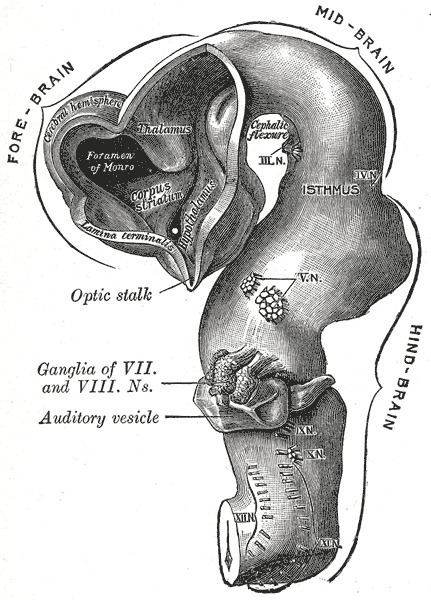Latin flexura mesencephalica | Code TE E5.14.3.3.0.0.3 | |
 | ||
The mesencephalic flexure or cephalic flexure is the first flexure, or bend, of the embryonic brain; it appears in the region of the mid-brain. In human embryos it generally occurs at the end of the 3rd week/beginning of 4th.
By means of it the fore-brain is bent in a ventral direction around the anterior end of the notochord and fore-gut, with the result that the floor of the fore-brain comes to lie almost antiparallel with that of the hind-brain.
This flexure causes the mid-brain to become, for a time, the most prominent part of the brain, since its dorsal surface corresponds with the convexity of the curve. As a consequence, the cardiac plate, which was previously anterior to the forebrain, approximates its adult location in what will become the thoracic region.
